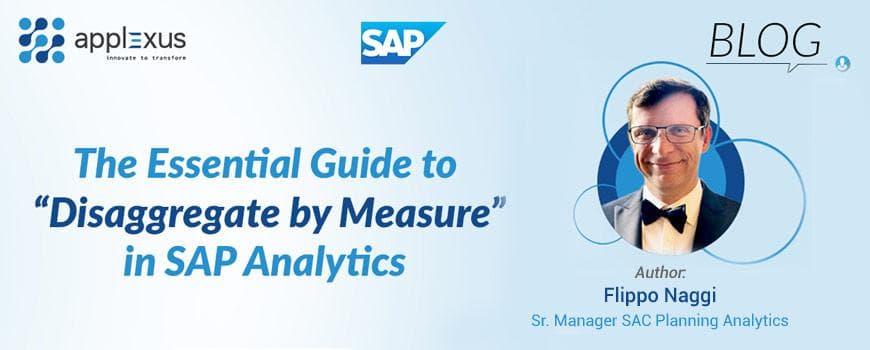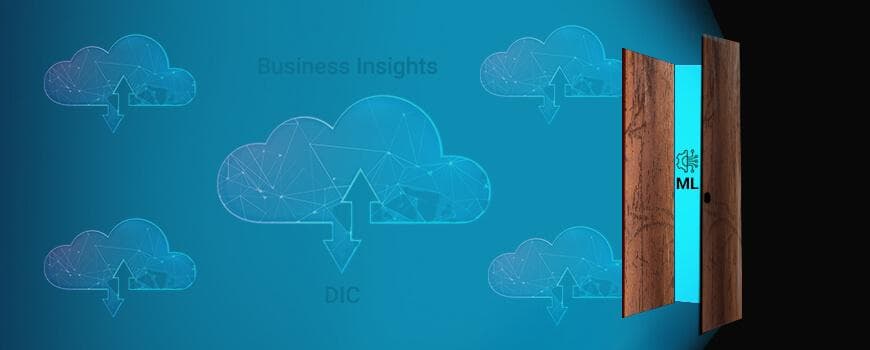Efficient SAP Data Integration Using Ingestion Frameworks
26 August 2024


Sriram Mani
Associate Director - AnalyticsSriram Mani is an Associate Director at Applexus with over 17 years of expertise in Data & Analytics. He has excelled in leading technology projects, architecting...
With exponential technological advancements in play, businesses need efficient and reliable ways to manage and integrate large volumes of data. Complex and comprehensive systems require robust data ingestion frameworks to ensure smooth data processing, compliance with regulatory standards, and maintenance of data integrity. This blog covers the critical aspects of data integration using ingestion frameworks, highlighting the challenges businesses face—such as handling diverse data sources and formats, ensuring data quality, and maintaining scalability—and pointers on how to overcome them.
What is a Data Ingestion Framework?
A data ingestion framework encompasses a set of tools and methodologies designed to efficiently collect, process, and load data from various sources into a central repository. It is fundamental in modern data management, enabling systematic handling of vast amounts of data. Key steps include data collection, transformation, and loading, ensuring data integrity and consistency. These frameworks support both batch processing and real-time streaming, incorporating mechanisms for validation, error handling, and monitoring to ensure data quality and reliability.
Once data is ingested, it is securely stored, integrated with existing datasets, and made accessible for reporting, analysis, and application development. Advanced analytics techniques can then be applied to derive actionable insights, while governance policies ensure data privacy and security. Overall, a robust data ingestion framework is essential for optimizing data management processes, transforming raw data into valuable business intelligence, and gaining a competitive edge in the market.
![]() SAP Data and Analytics Discovery Days
SAP Data and Analytics Discovery Days
Complimentary Hands - On Datasphere Workshop
Why Do We Need an Ingestion Framework?
Automation: Automating data ingestion requirements from the same source to the target combination regularly helps reduce manual intervention and errors.
Regulatory Requirements: Highly regulated industries, such as banking and pharmaceuticals, need to present audit logs of each activity in the data pipeline to regulators. An ingestion framework facilitates this requirement.
Controls: It allows for controlled activities in production servers by providing the right access to the right roles.
Data Integrity: Enforces the capture of details required for maintaining data integrity, thereby establishing the source-to-target data lineage for each feed.
Ingestion Framework and SAP
With a growing interconnected digital ecosystem, seamless data integration is crucial for organizations striving to harness actionable insights and drive business innovation. Ingestion frameworks play a pivotal role in facilitating the efficient collection, processing, and integration of diverse data sources into enterprise systems like SAP, widely adopted across global industries. By ensuring data accuracy, timeliness, and consistency, these frameworks empower businesses dealing with SAP data to optimize operations, enhance decision-making, and achieve sustainable growth.
Ingestion Framework for SAP Integration using DataSphere into Hyperscalers
The Ingestion Framework for SAP Integration using DataSphere into Hyperscalers streamlines the process of extracting, transforming, and loading SAP data into cloud storage solutions. This framework supports metadata extraction from various SAP sources such as HANA Views, CDS Views, and SAPI objects, ensuring comprehensive business context information.
At its core, the framework leverages replication flows to generate Parquet schema files and utilizes JSON configuration files for automated data ingestion. This approach ensures seamless integration of SAP data into cloud environments, enhancing scalability and operational efficiency.

Flow Diagram of Ingestion Framework for SAP Integration using DataSphere into Hyper scalars
The SAP Datasphere component within the framework ingests SAP data as Parquet objects, accommodating dynamic schema changes and preserving data pipeline integrity. It allows flexible configuration of folder structures for optimized data organization in cloud storage solutions.
To ensure data quality and consistency, the framework implements bronze and silver layers for data standardization and curation before entering the analytics pipeline. The Bronze layer captures raw data in its original form from various sources, serving as the initial landing zone for all incoming data. The Silver layer processes and refines raw data from the bronze layer, ensuring data quality and consistency for analytical purposes. Delta tables manage incremental updates, while JSON-based configurations facilitate data transformation rules across different ingestion stages.
For reporting and analytics, the framework supports rapid insights generation and traditional reporting capabilities. Data science teams can analyze data from Bronze-RAW (unprocessed) and Silver (processed) layers, enabling comprehensive data analysis and informed decision-making. The framework's flexibility extends to creating Data Mart Layers tailored to specific business needs, aligning analytical outputs with organizational objectives.
Methods of Integration
Outbound Integration via SAP Datasphere
SAP Datasphere facilitates outbound integration from SAP sources to Hyper Scaler storage accounts. It extracts SAP data, transforms it into Parquet files, stores them in Hyper Scaler landing containers, and refines the data using medallion architecture. Transformed data is then loaded into Data Marts for visualization, leveraging optimized Parquet files for efficient storage and query performance.
ODBC Connector for Direct Data Pull
Organizations can use an ODBC connector to pull SAP data directly from SAP Datasphere into Hyper Scaler storage. This approach establishes a direct connection, enabling real-time or batch data pulls using native cloud services. It stores extracted SAP data in Hyper Scaler storage formats, facilitating immediate access for analysis and reporting.
Advantages of SAP Data Integration
Integrating SAP data into Hyper Scalers using SAP Datasphere offers several benefits:
Reliability: Adopts industry-leading design patterns for reliable, scalable integration processes.
Change Data Capture (CDC): Enables applications to respond promptly to updates without reloading entire datasets, ensuring data relevance.
Transparency: Provides clear visibility into data movements, transformations, and storage locations, facilitating auditing and compliance with governance standards.
Challenges in SAP Data Integration
Integrating data from SAP systems presents challenges such as:
Dynamic Schema Changes: Managing frequent changes in SAP data sources requires robust mechanisms to adapt seamlessly.
Multiple Storage Formats: Integrating SAP data stored in various formats demands efficient schema bindings for consistency.
Large Data Volumes: Rapidly ingesting large volumes of SAP tables into Hyper Scaler storage poses scalability and performance challenges.
Metadata Integration: Comprehensive metadata integration from SAP sources is crucial for accurate data mapping and processing.
How To Address These Challenges
To effectively address the challenges of integrating large volumes of diverse data, you can follow some steps while integrating. You can choose Near Real-time/Event-based Ingestion or Batch-Based Ingestion depending on your data and the type of challenge you face.
Near Real-Time Ingestion
For dynamic data environments, ensure timely data availability by capturing and processing events as they occur. Implement publish-subscribe mechanisms for efficient data distribution, enabling stakeholders to access current information promptly. Support diverse data formats to enhance flexibility and adaptability, meeting the needs of high-velocity data environments.
Batch-Based Ingestion
Integrate large data volumes effectively by acquiring data from REST and SOAP APIs, supporting both full data refreshes and change data capture (CDC). Enable seamless integration across JSON, XML, relational databases, Parquet, and image formats. Empower users with self-service capabilities for adding new entities, enhancing operational agility. Process flat files accurately and incorporate parsers for XML and JSON to handle structured and semi-structured data seamlessly.
Handle diverse data sources including COTS products (Salesforce, Siebel, SAP), log data (call centers, web servers), and multimedia formats (binary, PDF) for comprehensive operational monitoring. Optimize storage efficiency with formats like Parquet, AVRO, or ORC. Manage large datasets using file splitters, schema generators, and comparators to maintain data integrity and accommodate schema evolution. Implement schema binding and typecasting for consistent data conversion and reliability.
Develop your organization's SAP BW Modernization Strategy
Attend a 4-hour virtual BW Modernization bootcamp
Success Stories: A Sneak Peak
Harnessing the power of SAP Datasphere and advanced data ingestion frameworks can transform business operations, driving efficiency, innovation, and strategic decision-making. Applexus successfully leveraged these technologies and has delivered significant benefits to our clients, showcasing the potential to enhance data quality, scalability, and overall operational performance.
Our client, a leading North American rare earth mining company, partnered with Applexus to implement SAP S/4HANA in a private cloud environment, integrating it with Azure Data Lake and Power BI. Leveraging SAP Datasphere, the solution enabled seamless data integration from multiple sources, enhancing business reporting capabilities and implementing advanced analytics for predictive maintenance and utilization optimization. This comprehensive approach provided enhanced operational insights, improved business agility, and robust data governance, positioning the client for future growth and sustainability in the rare earth mining industry.
Another client, a global mining and infrastructure leader, partnered with Applexus to implement a scalable data platform on Azure Cloud. Along with Azure Data Factory and SAP CDC Connectors, they seamlessly integrated SAP and non-SAP data sources. This robust data framework facilitated advanced analytics through Azure Synapse, automated data pipelines, and insightful Power BI visualizations. By centralizing their data strategy around SAP Datasphere, the client achieved enhanced data quality, scalability, and data-driven decision-making, significantly improving operational efficiency across the organization.
Conclusion
Efficient SAP data integration using robust ingestion frameworks is crucial for enterprises aiming to leverage data for enhanced decision-making and operational efficiency. These frameworks automate data processes, maintain data integrity, and seamlessly integrate SAP data with Hyper Scaler environments. By addressing challenges with advanced solutions like SAP Datasphere, organizations can effectively manage and utilize their data assets, gaining strategic insights and driving business growth in the digital age.












